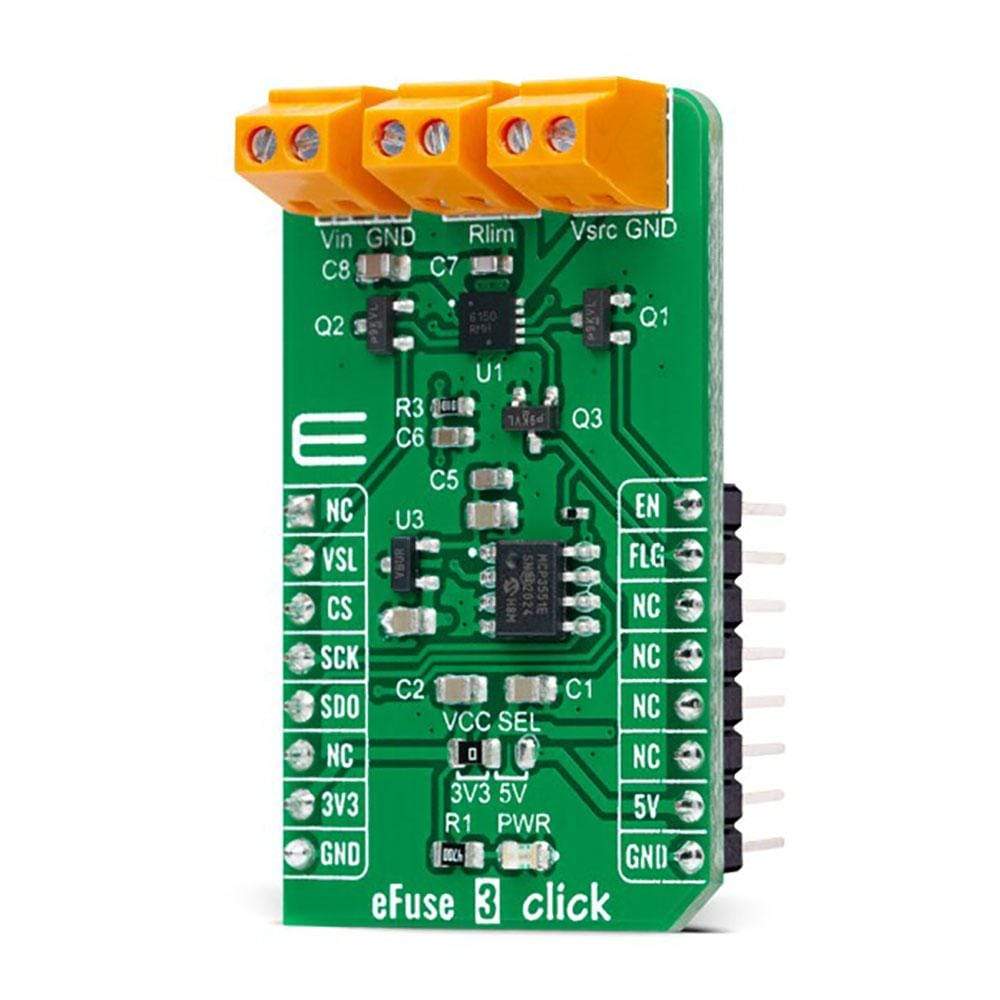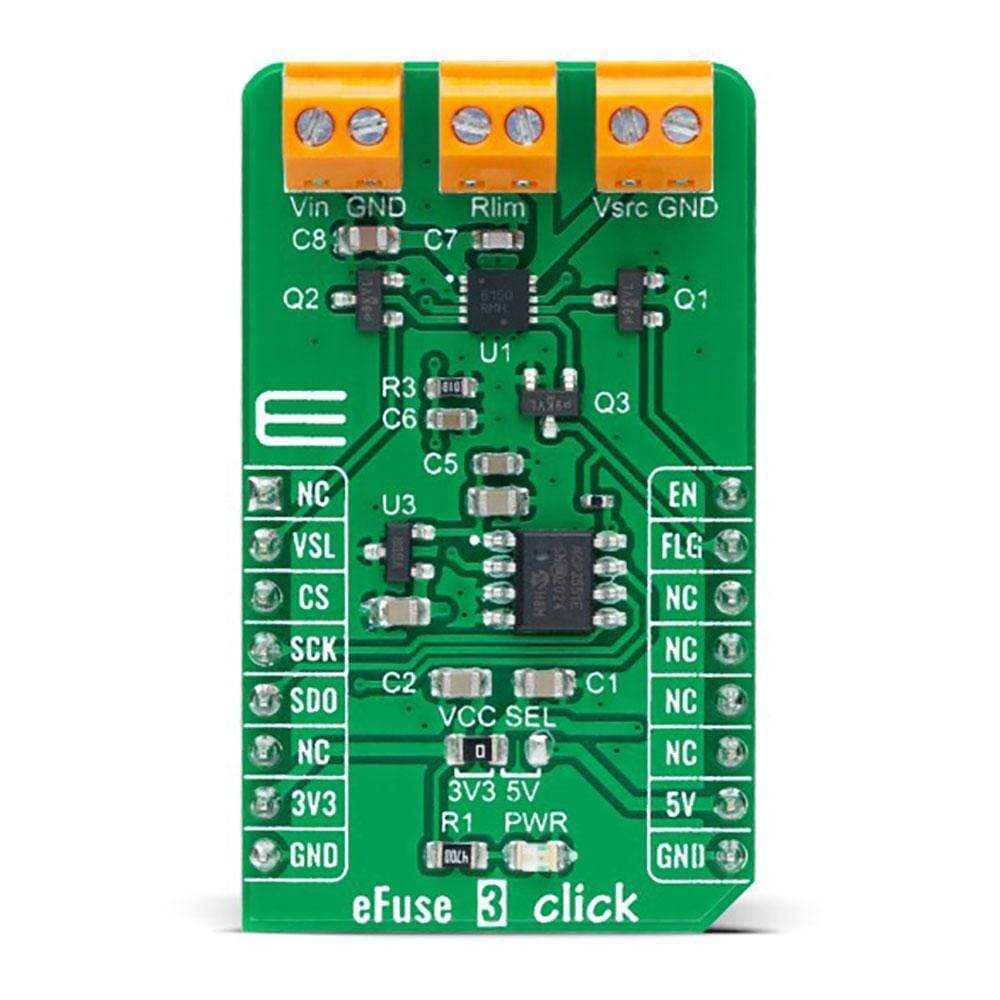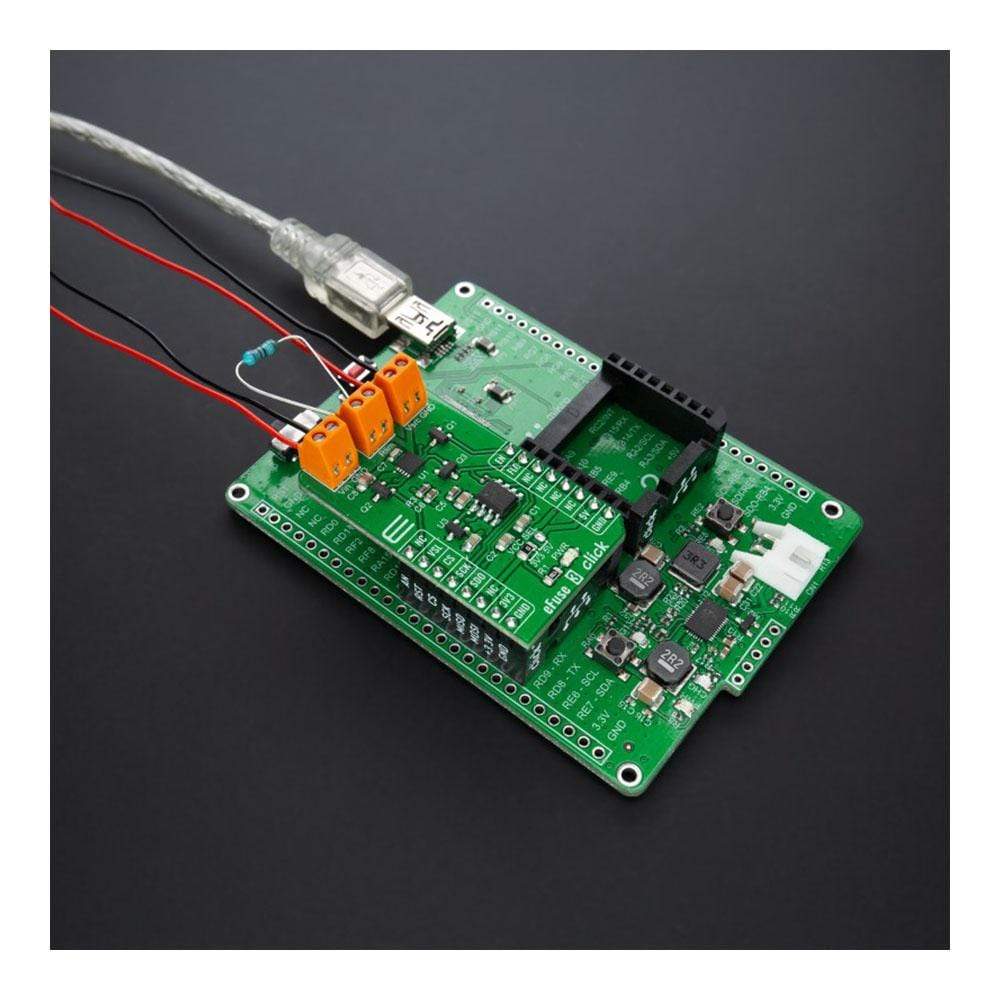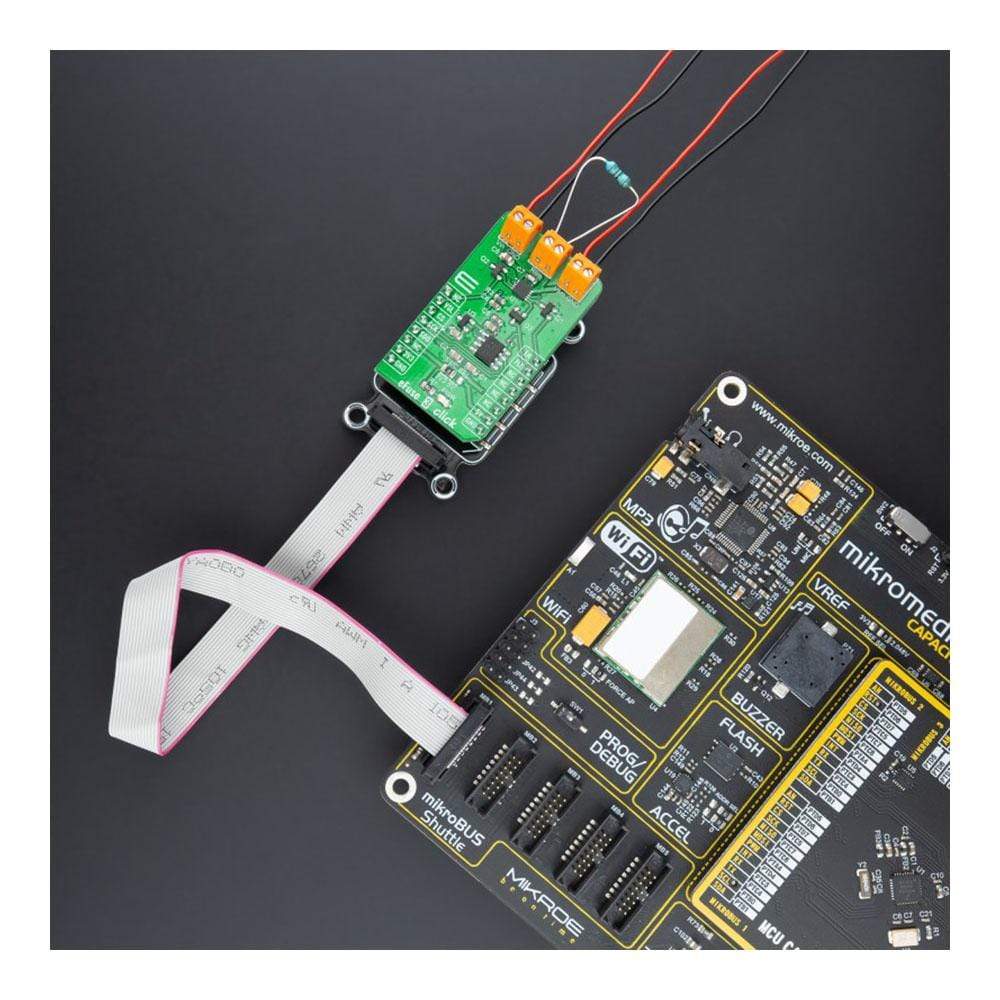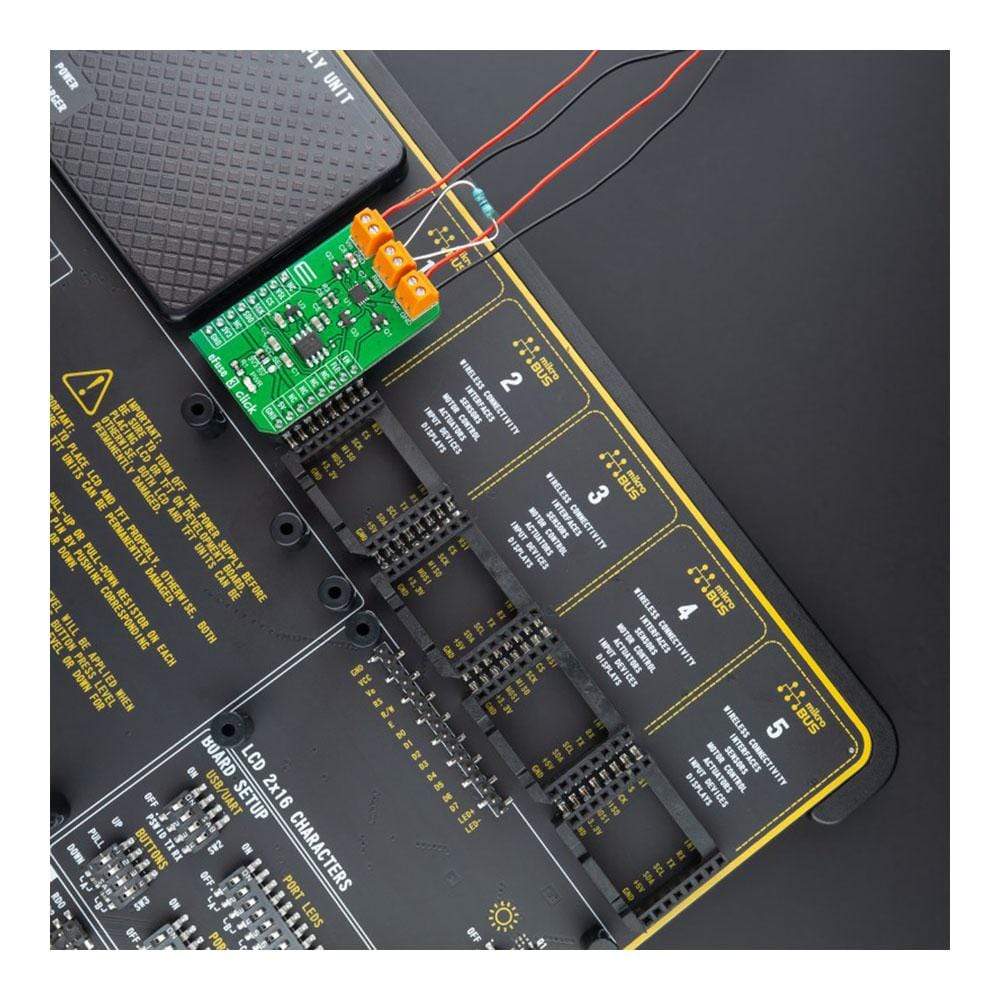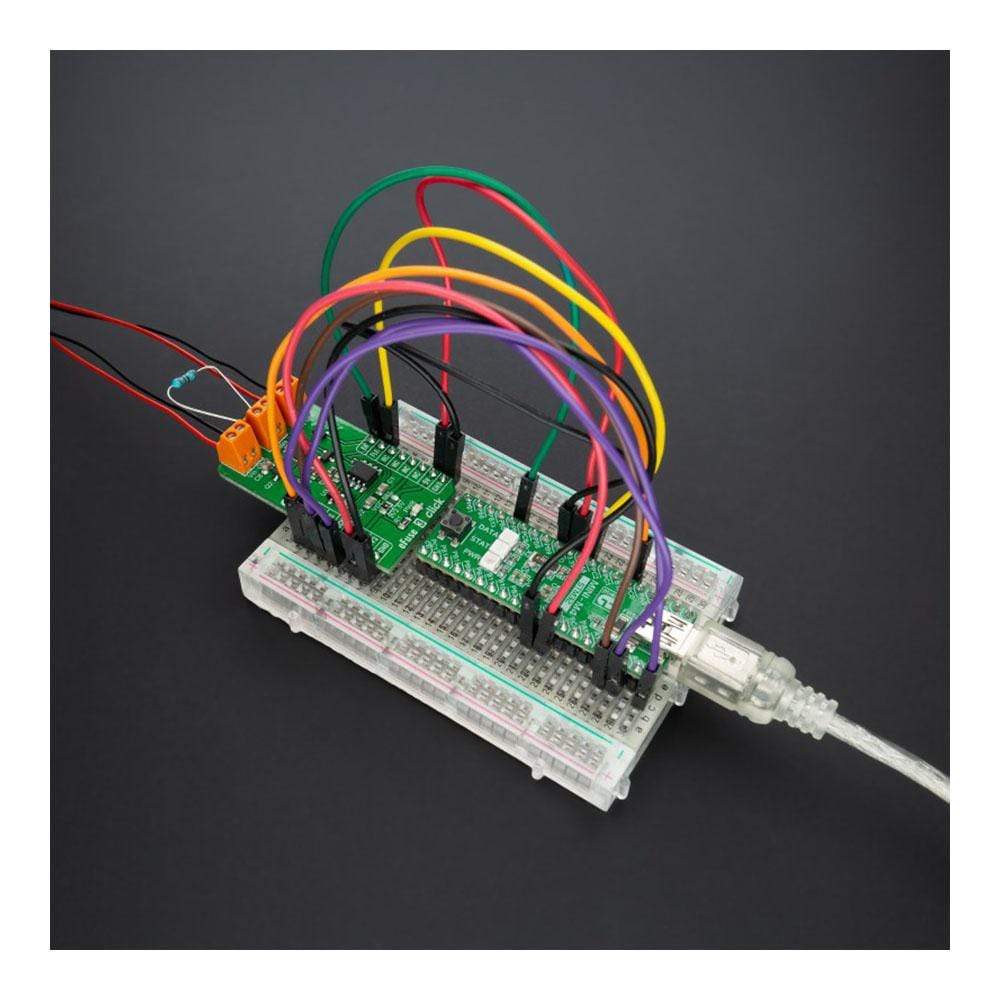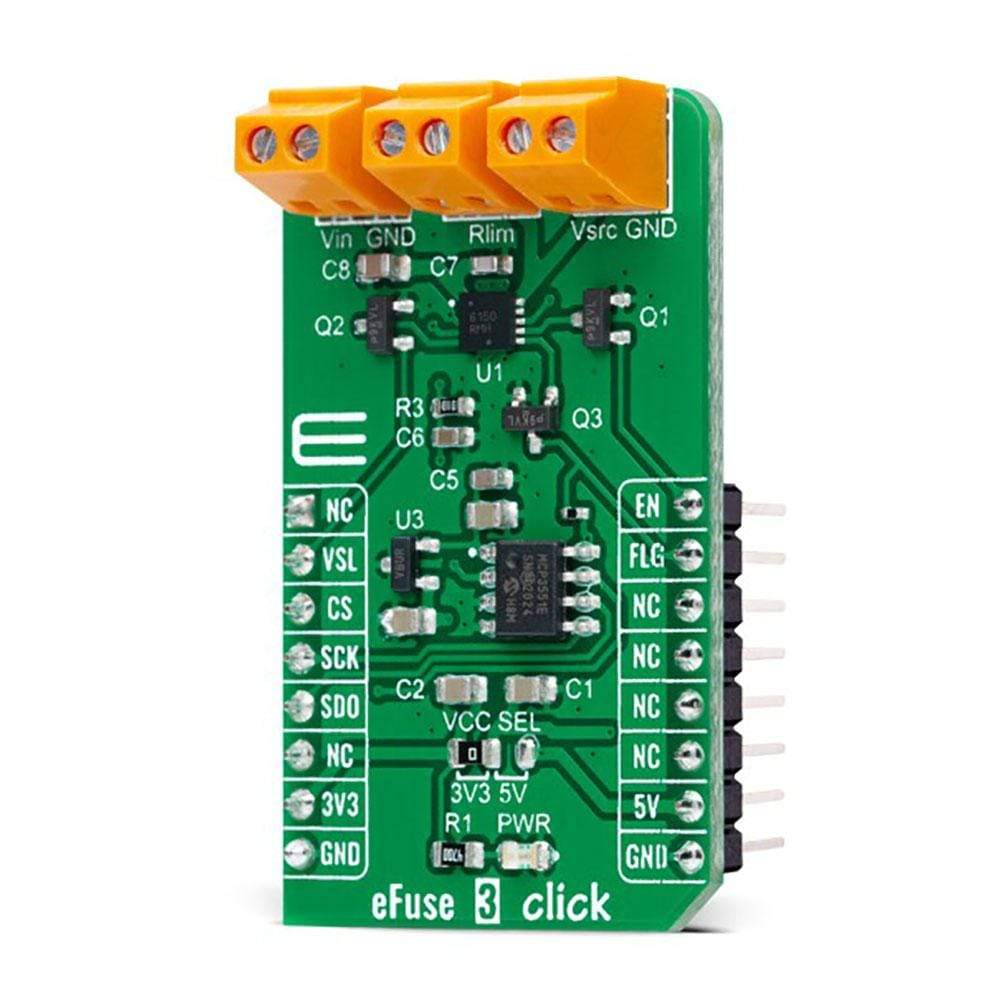
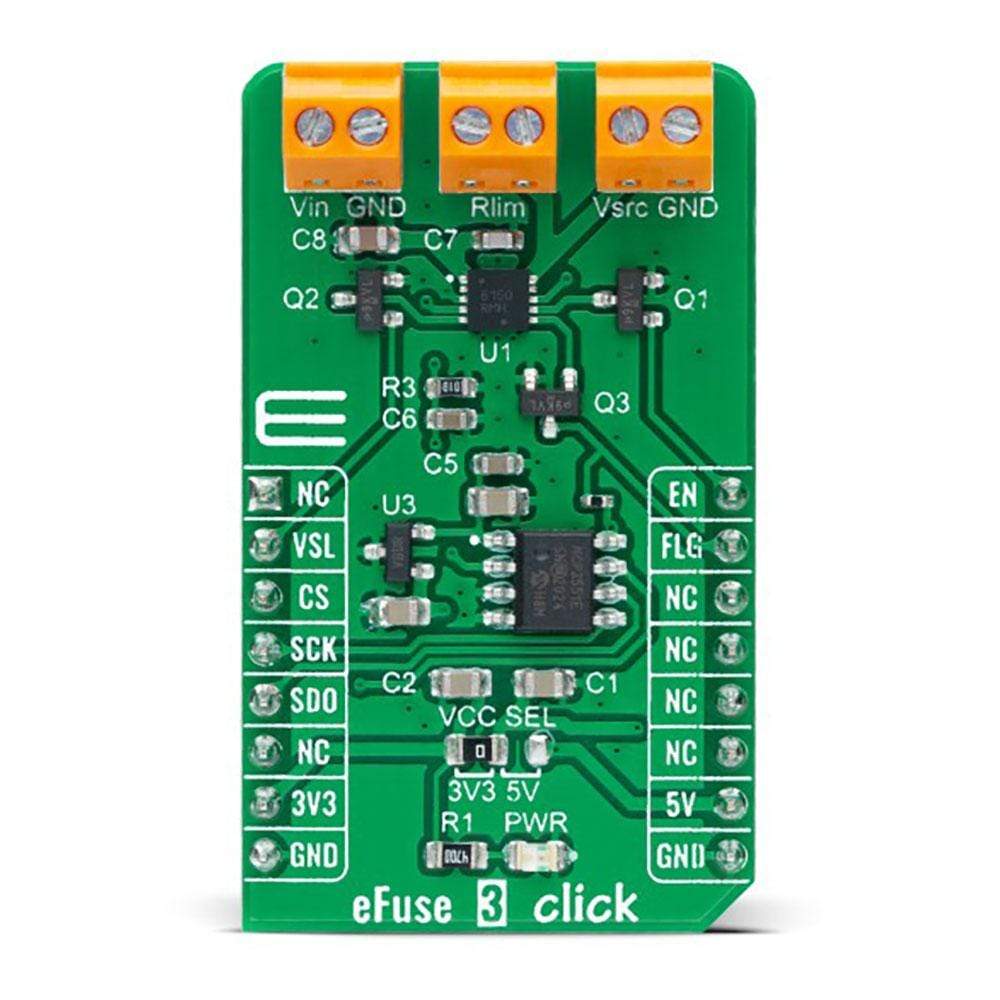
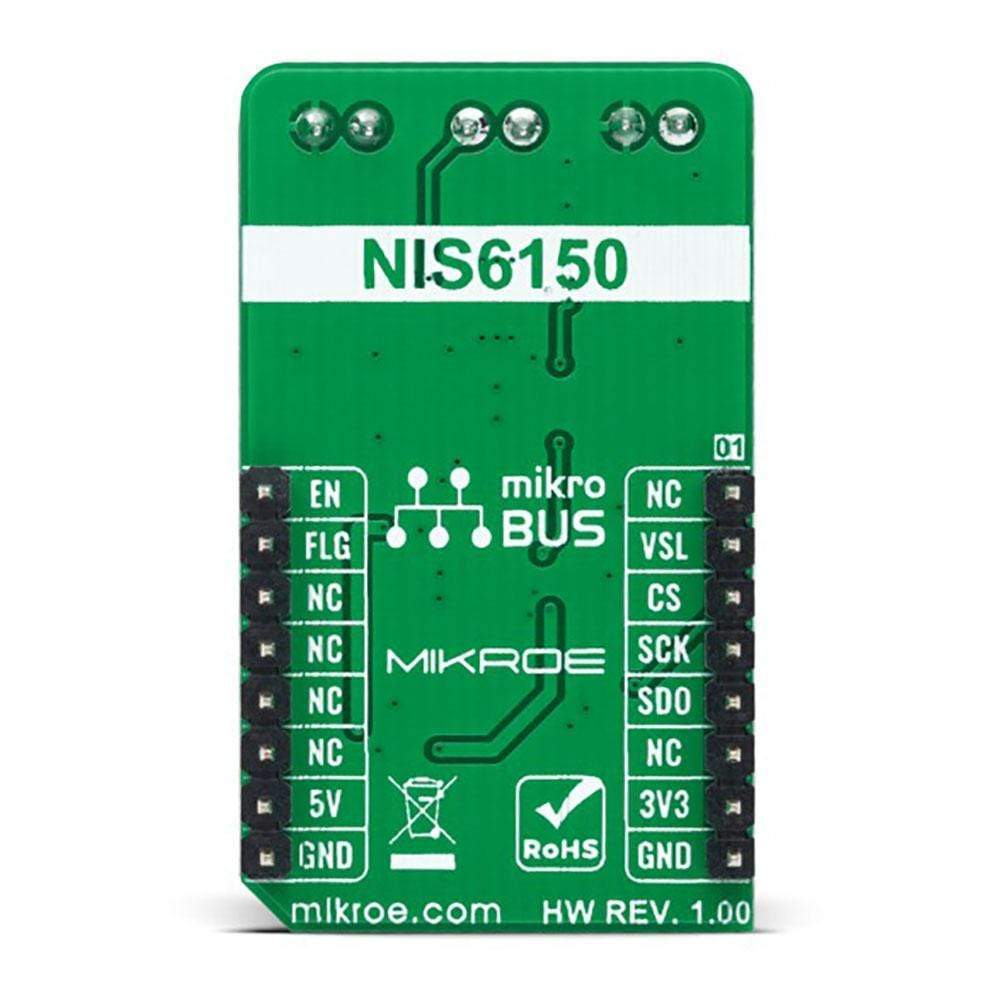
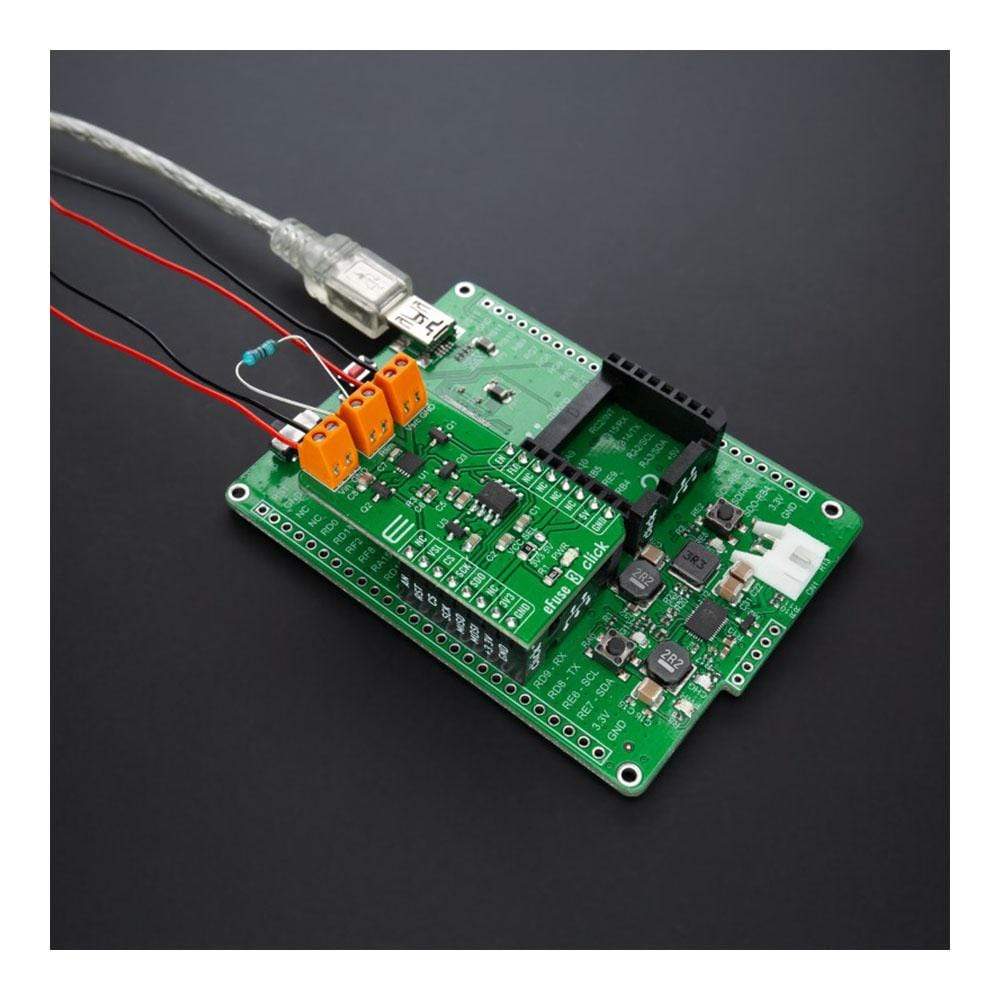
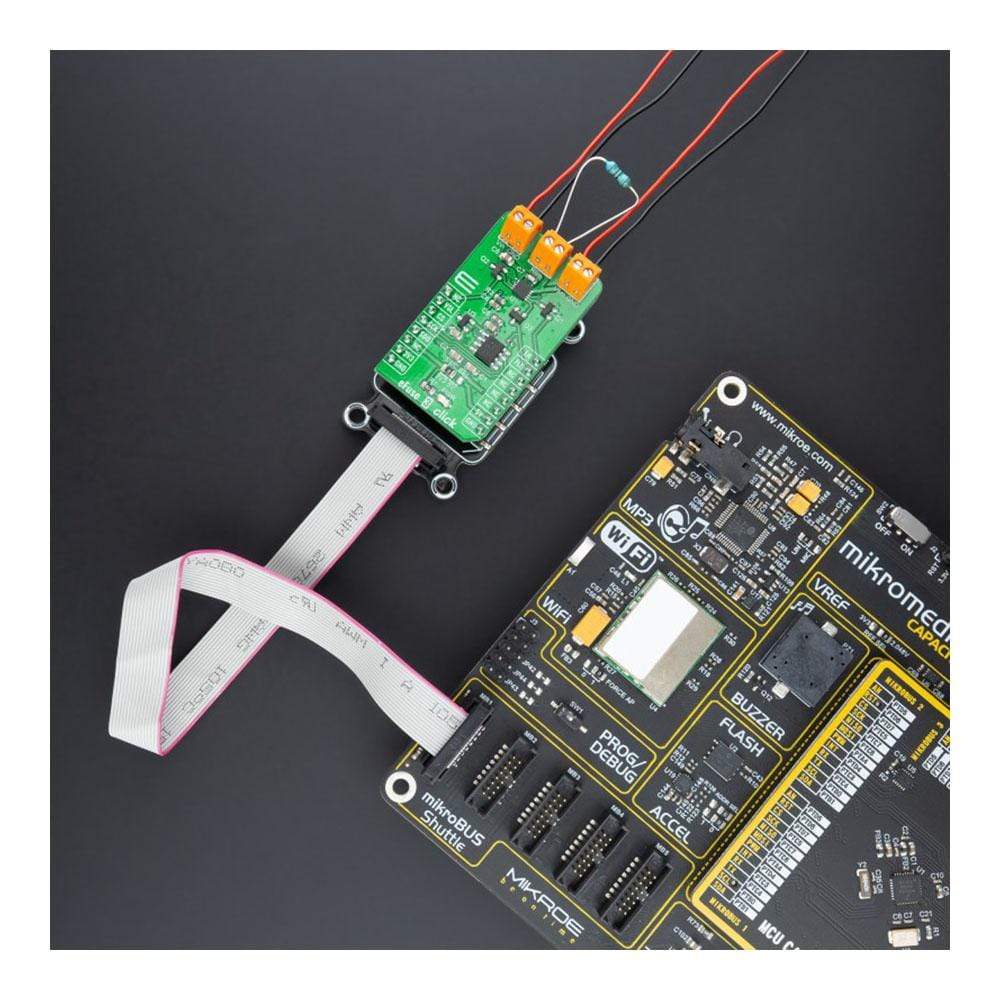
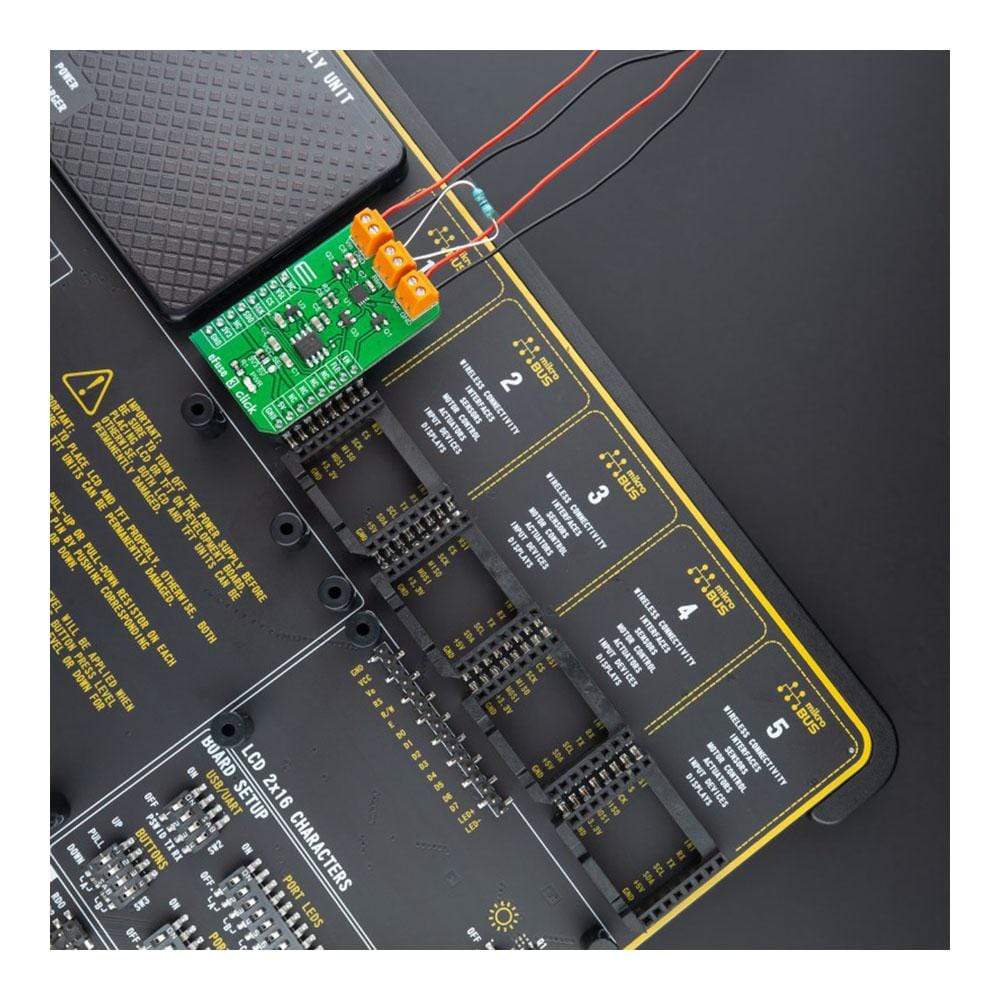
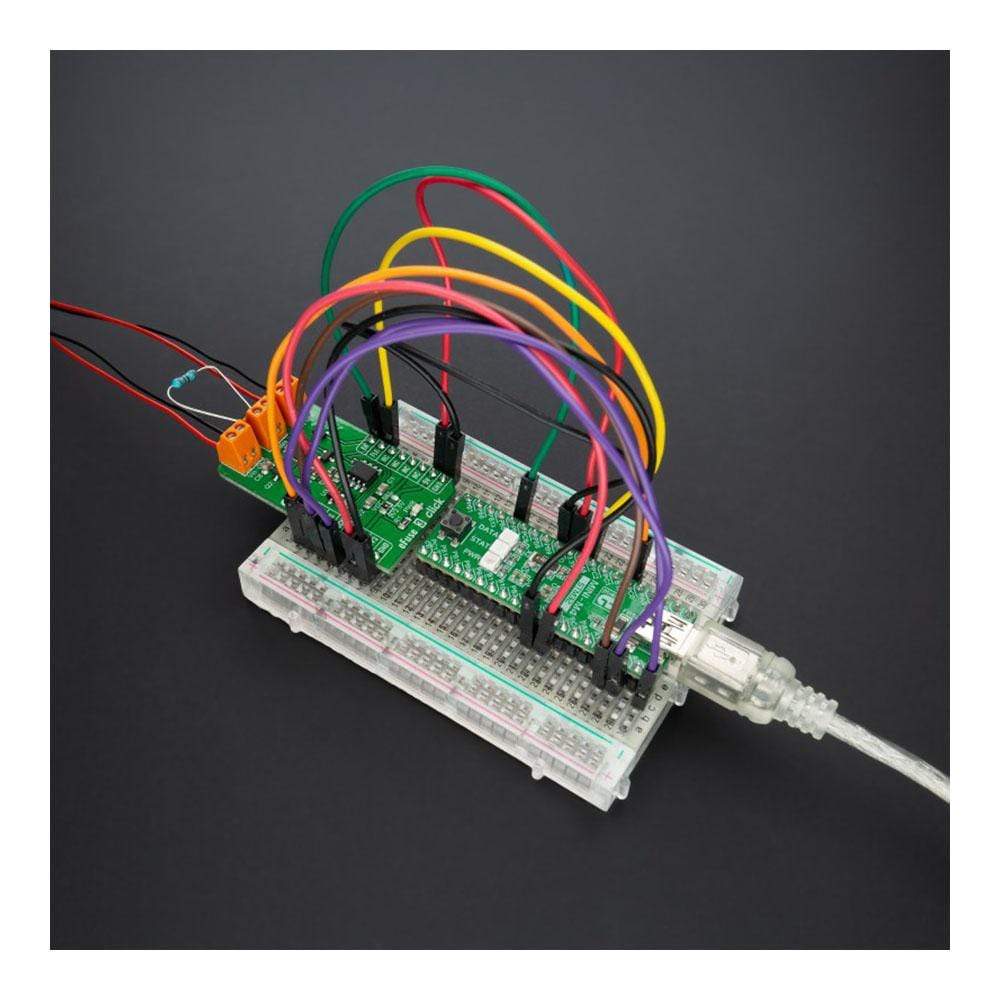
Overview
The eFuse 3 Click Board™ is a compact add-on board that contains an electronic eFuse. This board features the NIS6150, a resettable fuse that can significantly enhance the reliability of a USB application from both catastrophic and shutdown failures from ON Semiconductor. It is designed to buffer the load device from the excessive input voltage, which can damage sensitive circuits and protect the input side from reverse currents. It includes an over-voltage clamp circuit that limits the output voltage during transients but doesn’t shut the unit down, allowing the load circuit to continue its operation. This Click Board™ is suitable for automotive infotainment, overcurrent surge protection, and robust resettable fault protection.
The eFuse 3 Click Board™ is supported by a mikroSDK compliant library, which includes functions that simplify software development. This Click Board™ comes as a fully tested product, ready to be used on a system equipped with the mikroBUS™ socket.
Downloads
Le eFuse 3 Click Board™ est une carte complémentaire compacte qui contient un fusible électronique. Cette carte est équipée du NIS6150, un fusible réarmable qui peut améliorer considérablement la fiabilité d'une application USB contre les pannes catastrophiques et les pannes d'arrêt d'ON Semiconductor. Il est conçu pour protéger le dispositif de charge contre la tension d'entrée excessive, qui peut endommager les circuits sensibles et protéger le côté entrée contre les courants inverses. Il comprend un circuit de blocage de surtension qui limite la tension de sortie pendant les transitoires mais n'arrête pas l'unité, permettant au circuit de charge de continuer son fonctionnement. Ce Click Board™ convient à l'infodivertissement automobile, à la protection contre les surintensités et à la protection robuste contre les pannes réarmables.
Le tableau à clic eFuse 3™ est pris en charge par une bibliothèque compatible mikroSDK, qui comprend des fonctions qui simplifient le développement logiciel. Cette Click Board™ est un produit entièrement testé, prêt à être utilisé sur un système équipé du socket mikroBUS™.
| General Information | |
|---|---|
Part Number (SKU) |
MIKROE-4630
|
Manufacturer |
|
| Physical and Mechanical | |
Weight |
0.02 kg
|
| Other | |
Country of Origin |
|
HS Code Customs Tariff code
|
|
EAN |
8606027382499
|
Warranty |
|
Frequently Asked Questions
Have a Question?
Be the first to ask a question about this.

